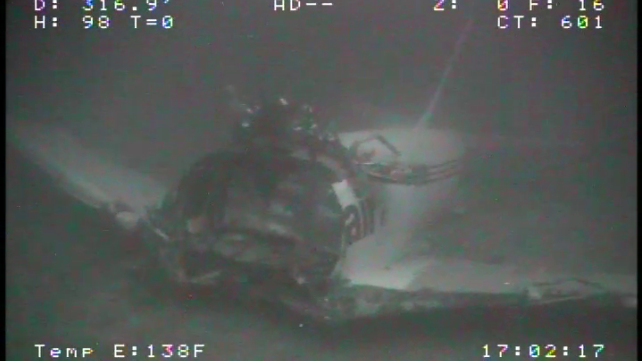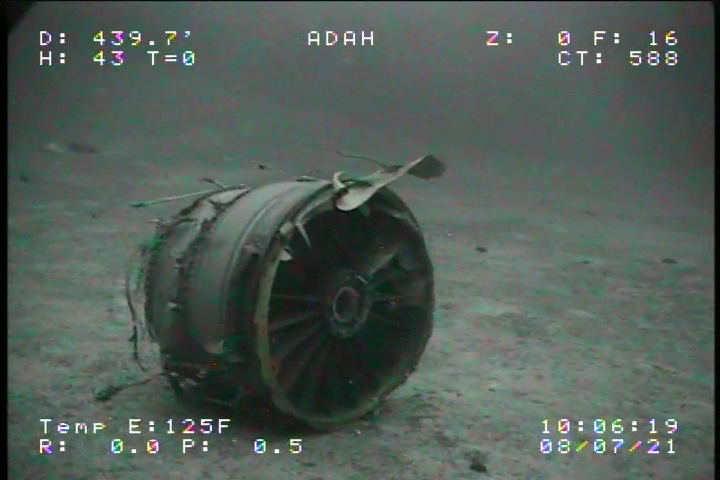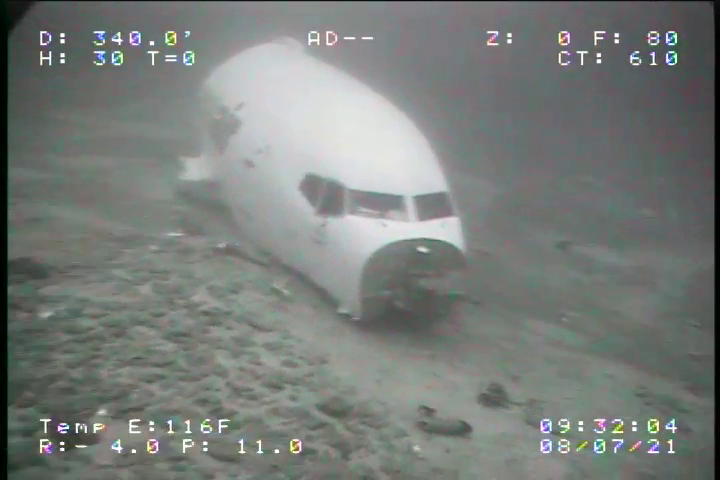NTSB Releases ROV Images of Downed Jetliner

The National Transportation Safety Board has released new images of the wreckage of Transair Flight 810, which went down off the coast of Oahu on July 2.
Using sidescan sonar, contractor Sea Engineering located the wreckage at a position about two miles off Daniel K. Inouye International Airport. The plane's fuselage sections were sitting in about 400 feet of water, and Sea Engineering's workboat sent down an ROV to record video of the scene. The depth would be challenging for dive work, so NTSB is not planning to deploy a human dive team for the purpose of recovering the aircraft's flight data recorder, and it is evaluating other recovery options.


Courtesy NTSB / Sea Engineering
The plane in question was an aging Boeing 737-200 built in 1975. It took off from the Honolulu airport at about 0130 on July 2, and the pilots reported loss of power in one engine and rising temperatures in the other before going down.
Both pilots survived the crash, though they were seriously injured, and they escaped the wreckage before it sank. The U.S. Coast Guard and the Honolulu Fire Department found them clinging to debris and rescued them from the water shortly after the plane crash-landed. "One was on the tail and the other clinging to packages,” Lt. Cmdr. Karin Evelyn told the AP.
At about 0230, a USCG helicopter arrived on scene and deployed a rescue swimmer. The intervention was just in time, Lt. Cmdr. Evelyn said, as the tail section was sinking and was about to deprive the first pilot of his floatation aid. A fire department response boat found and rescued the second pilot from the debris field.
Early generations of the 737 have a strong safety record, as evidenced by Transair 810's previous 45-plus years of service. Aviation analysts suggest that a crash related to loss of power is relatively rare for a modern jetliner, given the redundancy of multiple engines; the NTSB is investigating the root cause. A fuel sample taken from another airplane that took on fuel in the same location on the same night did not reveal any irregularities.
